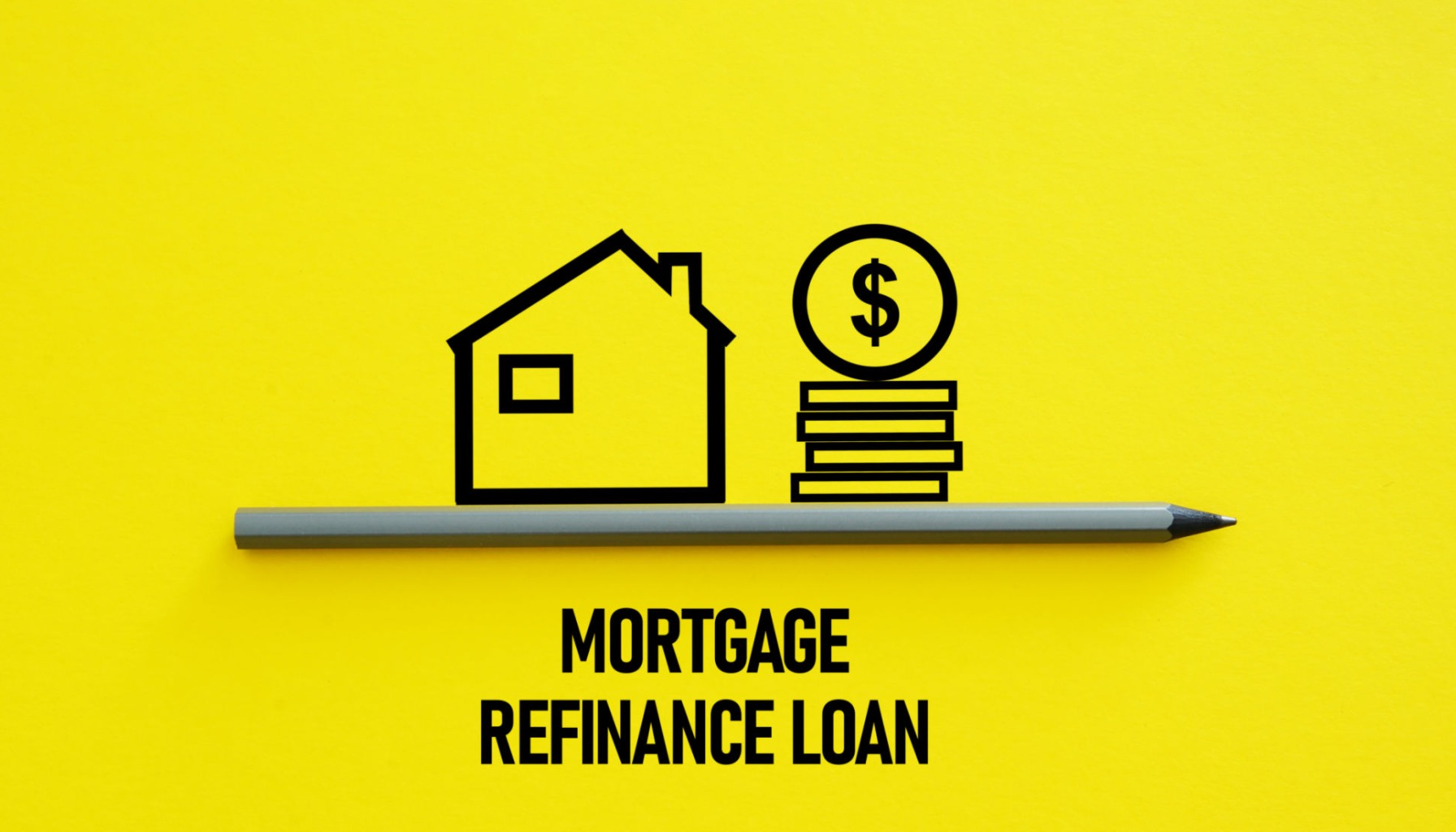This is fantastic news for anyone considering refinancing their home! Mortgage rates today, specifically the 30-year fixed refinance rate, have seen a significant drop of 27 basis points, falling to an average of 6.67% according to Zillow. This encouraging movement means that if you've been on the fence about refinancing, now might be the perfect time to explore your options and potentially lower your monthly payments.
Mortgage Rates Today: 30-Year Refinance Rate Sees Sharp Decline of 27 Basis Points
As someone who's been following the mortgage and housing market for years, I see this kind of movement as more than just a number. It's a signal of shifting economic currents and a potential opportunity for homeowners. When rates move like this, especially with such a noticeable dip, it often sets off a ripple effect, and understanding those ripples is key to making smart financial decisions.
Let's dive into what this 27 basis point drop really means for you and the broader economic picture.
A Closer Look at the Numbers: What's Really Happening with Rates?
Zillow home loans data paints a clear picture:
- 30-Year Fixed Refinance Rate: Dropped from an average of 6.94% last week to 6.67%. This is a substantial move.
- 15-Year Fixed Refinance Rate: Also saw a decrease, falling 16 basis points to 5.66%.
- 5-Year ARM Refinance Rate: Experienced the most significant drop, down 33 basis points to 6.84%.
This data, last updated on Sunday, October 19, 2025, shows a clear downward trend across the board. While the 30-year fixed is what most homeowners think of, the movement in the 15-year and ARM rates also tells a story about market sentiment and lender strategies.
What a 27 Basis Point Drop Means for Your Monthly Payments
Let's break down what that 27 basis point decrease actually translates to in real dollars. A basis point is just 1/100th of a percent. So, a 27 basis point drop is 0.27%.
Imagine you have a mortgage balance of $300,000. On a 30-year loan, even a small change in interest rate can make a big difference over time.
- At 6.94%: Your estimated monthly principal and interest payment would be around $1,992.
- At 6.67%: Your estimated monthly principal and interest payment drops to around $1,934.
That's a saving of roughly $58 per month, or over $700 per year! Over the life of a 30-year mortgage, this adds up to tens of thousands of dollars in savings. It might not sound like a fortune initially, but when you look at the cumulative effect, it's significant.
Refinance Timing: Locking in Rates Before Further Easing?
The big question on everyone's mind is: is this it, or are rates going even lower? Based on recent signals from Federal Reserve Chair Jerome Powell, it seems there's a strong possibility of further easing ahead.
On October 14, 2025, Chair Powell made some comments that really caught my attention. He spoke about the labor market showing signs of weakness and hinted that the Fed might need to cut interest rates again. He mentioned that there's “no risk-free path” forward, acknowledging the tricky balance they have to strike.
This is crucial because the Federal Reserve's benchmark interest rate directly influences other interest rates in the economy, including mortgage rates. While mortgage rates aren't directly set by the Fed, the Fed's actions create the environment for them.
The Fed already made its first rate cut of 2025 on September 17, bringing the target range down. Powell's recent remarks suggest another cut could be on the horizon, potentially in November or December. If this happens, it could push Treasury yields (which are like the benchmark for mortgage rates) even lower.
My take: While this drop is great, it might be wise to keep a close eye on economic data and future Fed announcements. If you have a specific rate target in mind, it might be worth considering locking in now, especially if your current rate is significantly higher.
Comparing 30-Year Fixed vs. 15-Year Refinance Options
The data also shows the 15-year fixed refinance rate is lower than the 30-year. This is standard, but it's worth revisiting the trade-offs when you're considering refinancing.
Here's a quick comparison:
| Feature | 30-Year Fixed Refinance Rate | 15-Year Fixed Refinance Rate |
|---|---|---|
| Rate (Approx.) | 6.67% | 5.66% |
| Monthly Payment | Lower | Higher |
| Total Interest Paid | Higher | Lower |
| Loan Term | Longer | Shorter |
Choosing between the two depends on your financial goals:
- If your main goal is to lower your monthly payments: The 30-year fixed is generally the way to go. You'll spread out your payments over a longer period, making each individual payment more manageable.
- If your goal is to pay off your mortgage faster and save on total interest: The 15-year fixed is your best bet. While your monthly payments will be higher, you'll build equity much quicker and pay significantly less interest over the life of the loan.
Given the current rates, refinancing into a 15-year fixed mortgage could be incredibly attractive for those who can comfortably afford the higher monthly payments. The savings in interest would be substantial.
How Your Credit Score Impacts Your Refinance Rate Today
It's crucial to remember that the rates I'm discussing are national averages. Your actual refinance rate will depend on several factors, with your credit score being one of the most important.
Think of your credit score as your financial report card. A higher score signals to lenders that you're a lower risk, and they're more likely to offer you the best interest rates.
- Excellent Credit (740+): You'll likely qualify for rates close to or even better than the national averages.
- Good Credit (670-739): You'll still get competitive rates, but maybe slightly higher than the top-tier offers.
- Fair Credit (580-669): Your rates will be higher, and you might have fewer options.
- Poor Credit (Below 580): Refinancing might be difficult, and you'll likely face very high interest rates if you are approved.
My advice: Before you even start shopping for refinance rates, get a copy of your credit report and check your score. If it's not where you want it to be, focus on improving it before applying. Paying down debt, disputing errors, and making on-time payments can all make a difference.
The Federal Reserve's Role in Mortgage Rates: A Late-October 2025 Outlook
The connection between the Federal Reserve and mortgage rates is something I explain often. It can seem a bit indirect, but it's actually quite powerful.
The Fed controls the federal funds rate, which is the interest rate banks charge each other for overnight lending. When the Fed lowers this rate, it makes it cheaper for banks to borrow money. This typically leads to lower interest rates across the economy, including:
- Treasury Yields: The 10-year U.S. Treasury yield is a key benchmark for 30-year fixed-rate mortgages. When the Fed signals rate cuts, Treasury yields tend to fall. As of mid-October 2025, the 10-year yield was around 4.12%, which is below its long-term average. This is a good sign for mortgage rates.
- Mortgage-Backed Securities (MBS): Lenders sell mortgages they originate to investors in the form of MBS. These MBS need to offer a competitive return compared to safer investments like Treasury bonds. If Treasury yields fall, MBS yields also need to adjust.
- The Spread: There's usually a “spread” – a difference – between the 10-year Treasury yield and the mortgage rate. This spread accounts for extra risk involved in mortgages. Even if Treasury yields go down, the spread can widen or narrow, affecting how much of that decline is passed on to borrowers. Right now, the spread is still sitting above 2%, which is why mortgage rates haven't fallen as sharply as Treasury yields.
Chair Powell's recent dovish signals (meaning he's leaning towards lowering rates) strongly suggest that we could see the 10-year Treasury yield continue to trend lower. This has a direct impact on making 30-year fixed mortgage rates even more attractive. If that spread also narrows a bit, we could see mortgage rates inching closer to the low 6% range, which would be a significant win for borrowers.
Recommended Read:
30-Year Fixed Refinance Rate Trends – October 18, 2025
What This Means for the Housing Market and You
This dip in mortgage rates, coupled with the prospect of further reductions, has several implications:
- For Buyers: Affordability improves. Even with high home prices, lower interest rates make monthly payments more manageable, potentially bringing more buyers back into the market.
- For Refinancers: Clearly, this is the sweet spot. If your current rate is above 7%, you're likely leaving money on the table. Even rates in the high 6%s could be worth exploring for a refinance if you can get a lower rate or better loan terms.
My personal experience: I've seen refinances at rates like these breathe new life into homeowners' budgets. It's not just about saving money; it's about freeing up cash for other investments, paying down higher-interest debt, or simply having more financial breathing room. The Fed's actions, driven by careful analysis of economic data, are creating a more favorable borrowing environment. While inflation is still a concern, the focus on labor market health suggests a proactive approach to monetary policy. This is a positive development for anyone looking to purchase or refinance a home.
“Invest Smart — Build Long-Term Wealth Through Real Estate”
Norada's team can guide you through current market dynamics and help you position your investments wisely—whether you're looking to reduce rates, pull out equity, or expand your portfolio.
Work with us to identify proven, cash-flowing markets and diversify your portfolio while borrowing costs remain favorable.
HOT NEW TURNKEY DEALS JUST LISTED!
Speak with a seasoned Norada investment counselor today (No Obligation):
(800) 611-3060
Recommended Read:
- When You Refinance a Mortgage Do the 30 Years Start Over?
- Should You Refinance as Mortgage Rates Reach Lowest Level in Over a Year?
- NAR Predicts 6% Mortgage Rates in 2025 Will Boost Housing Market
- Mortgage Rates Predictions for 2025: Expert Forecast
- Half of Recent Home Buyers Got Mortgage Rates Below 5%
- Mortgage Rates Need to Drop by 2% Before Buying Spree Begins
- Will Mortgage Rates Ever Be 3% Again: Future Outlook
- Mortgage Rates Predictions for Next 2 Years
- Mortgage Rate Predictions for Next 5 Years
- Mortgage Rate Predictions for 2025: Expert Forecast



